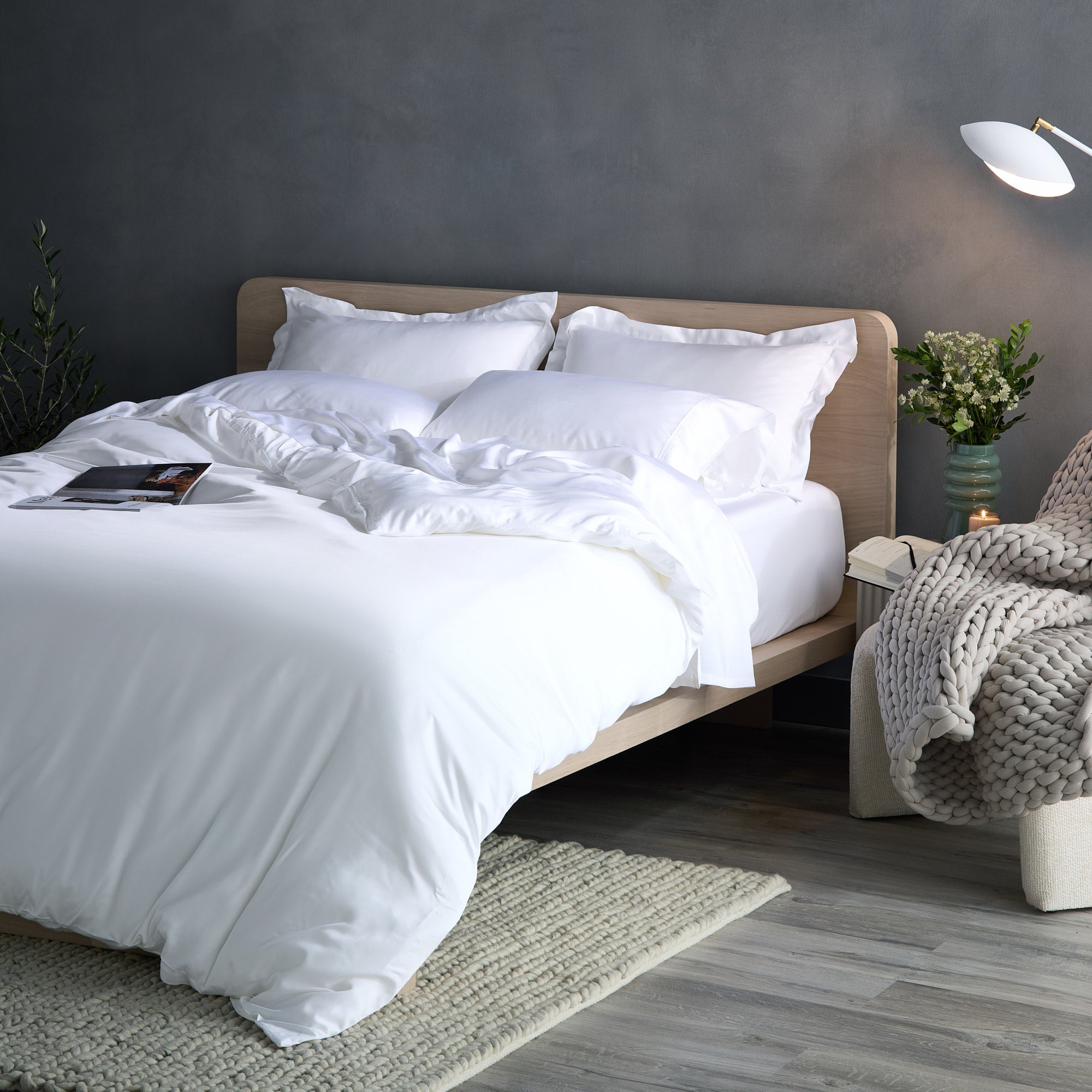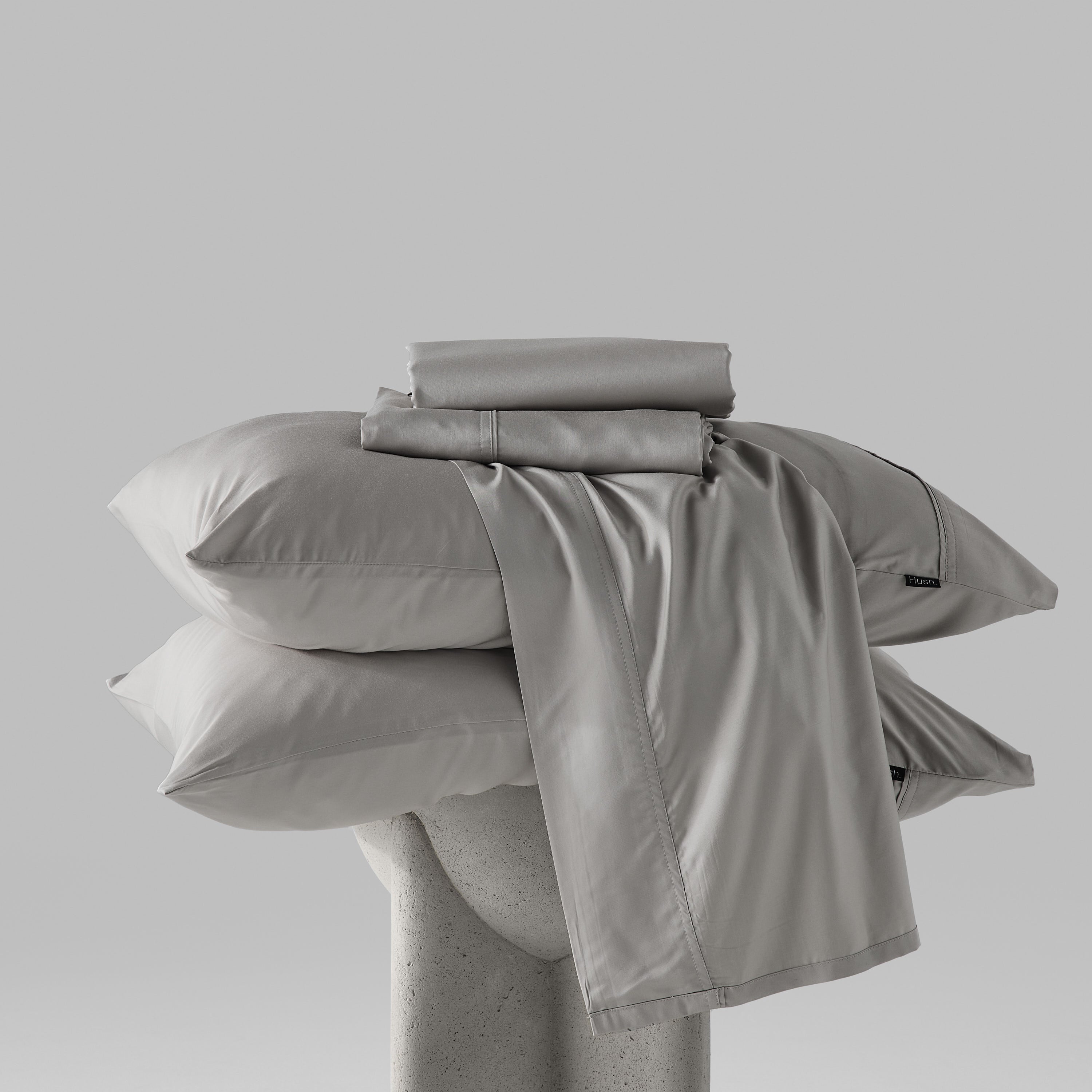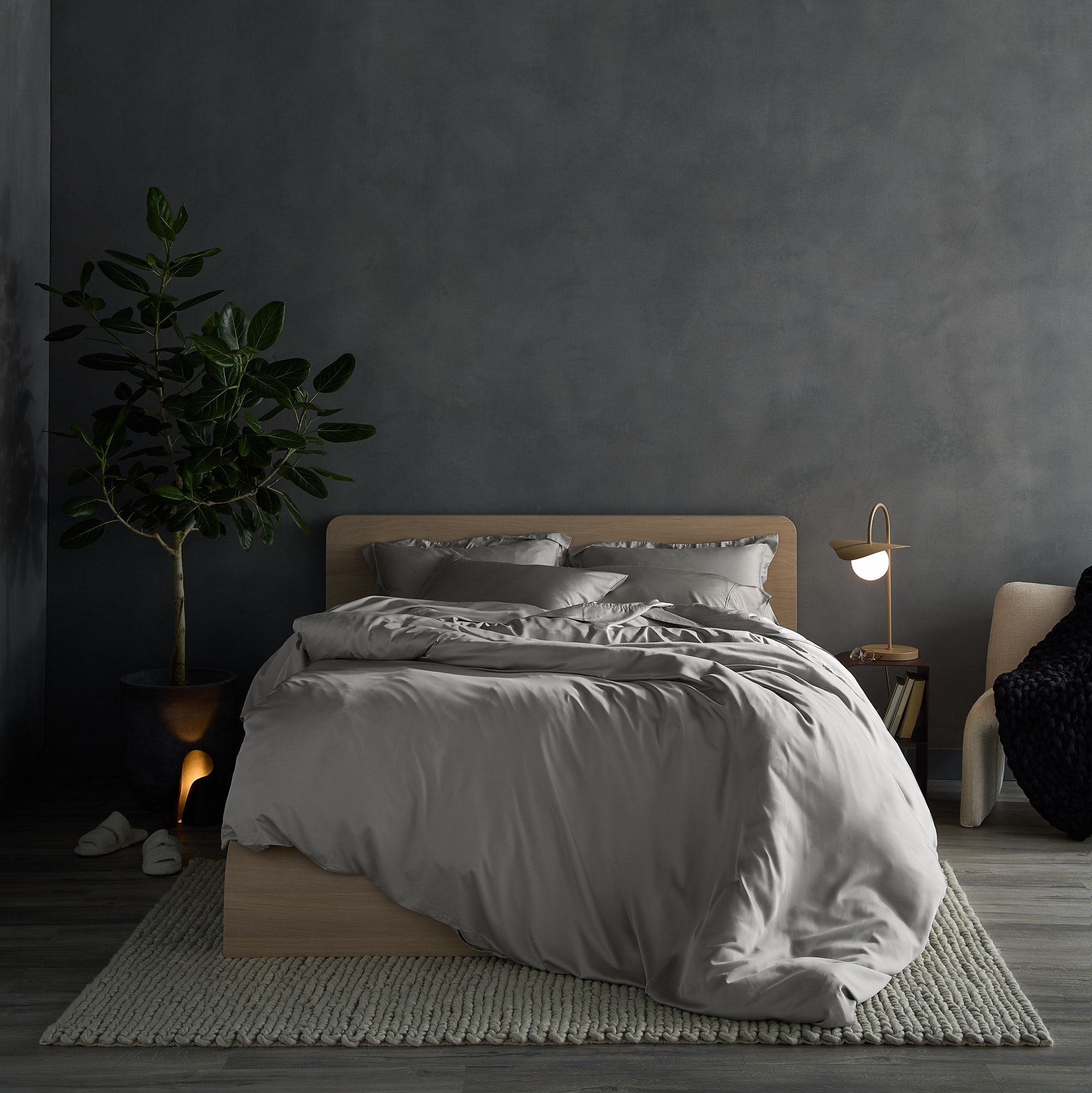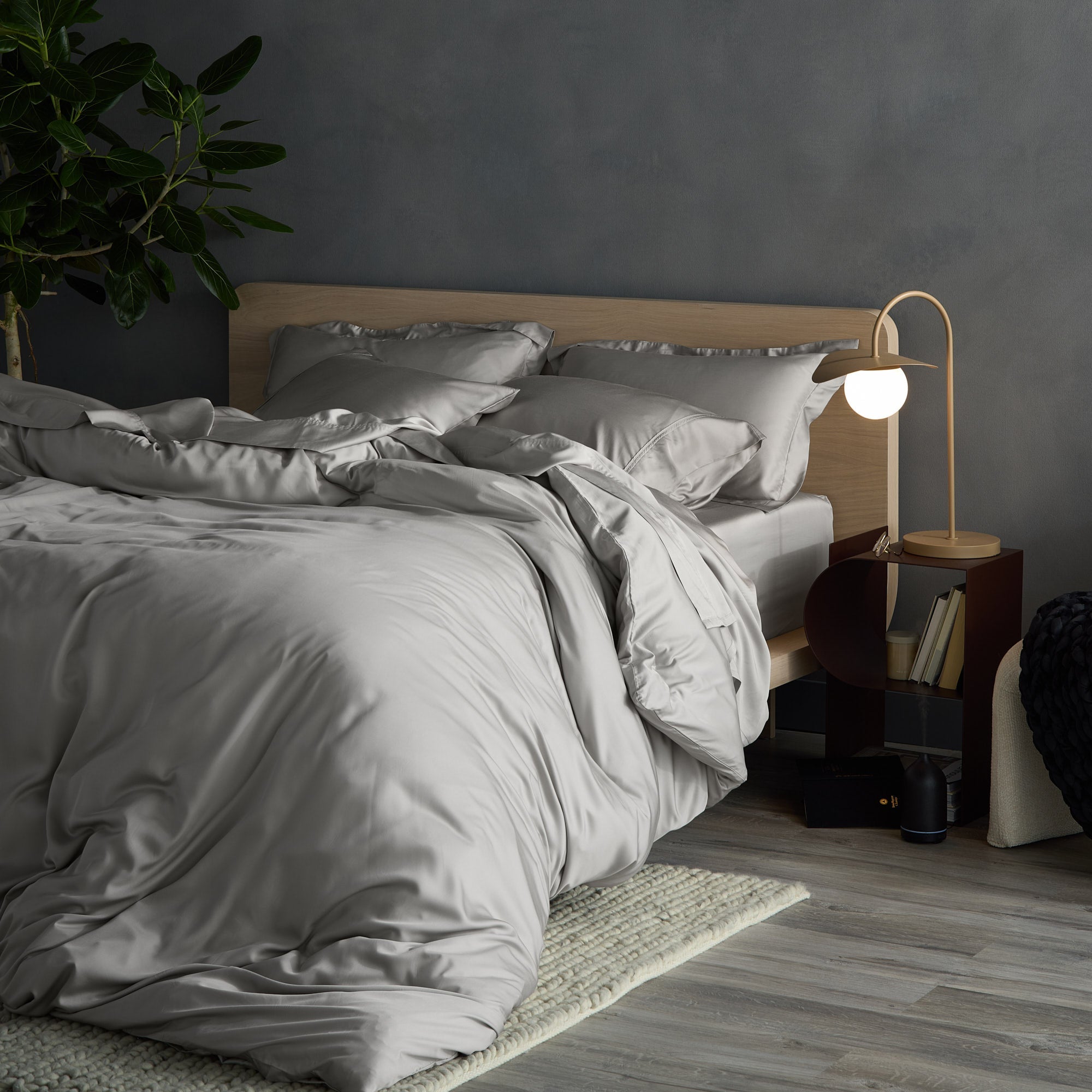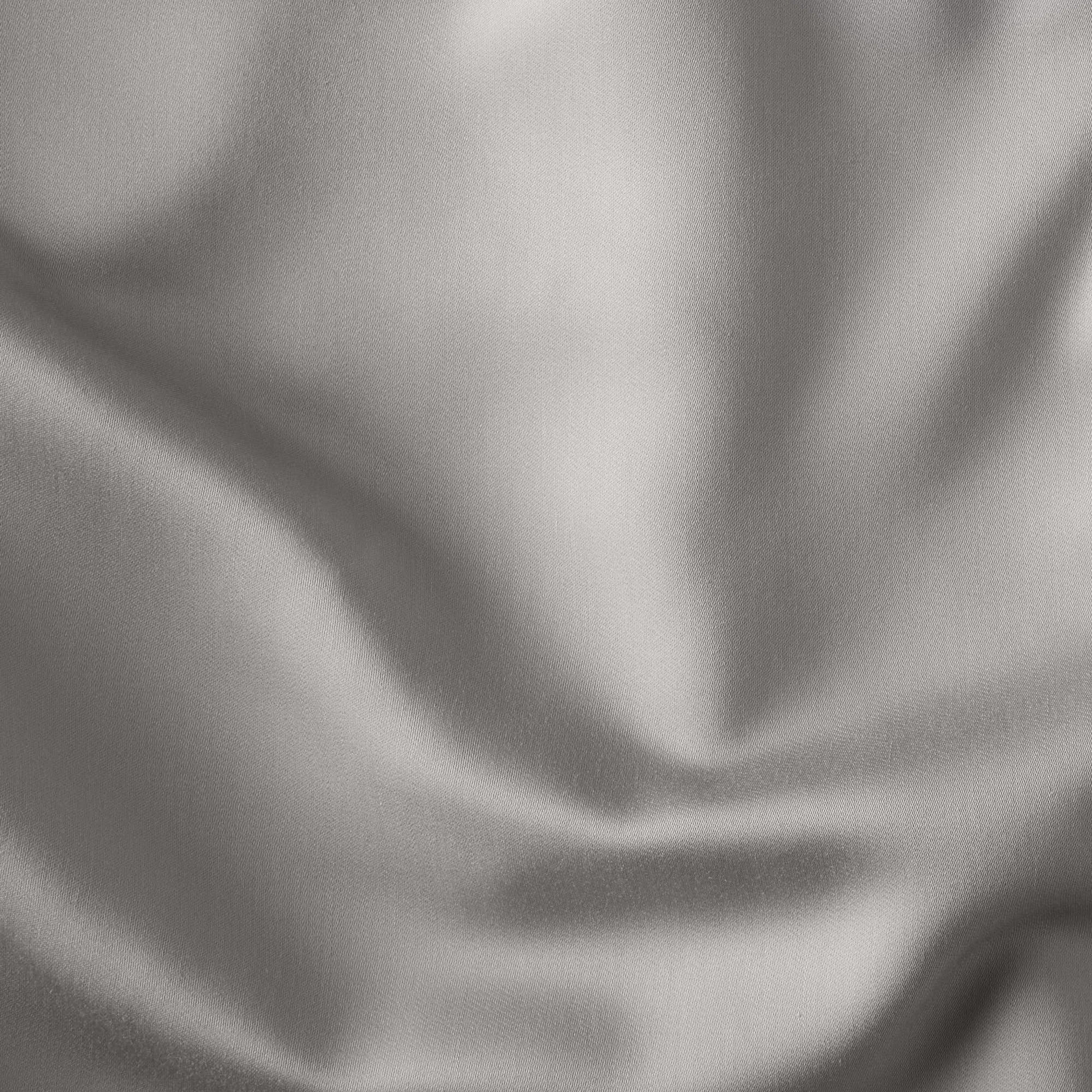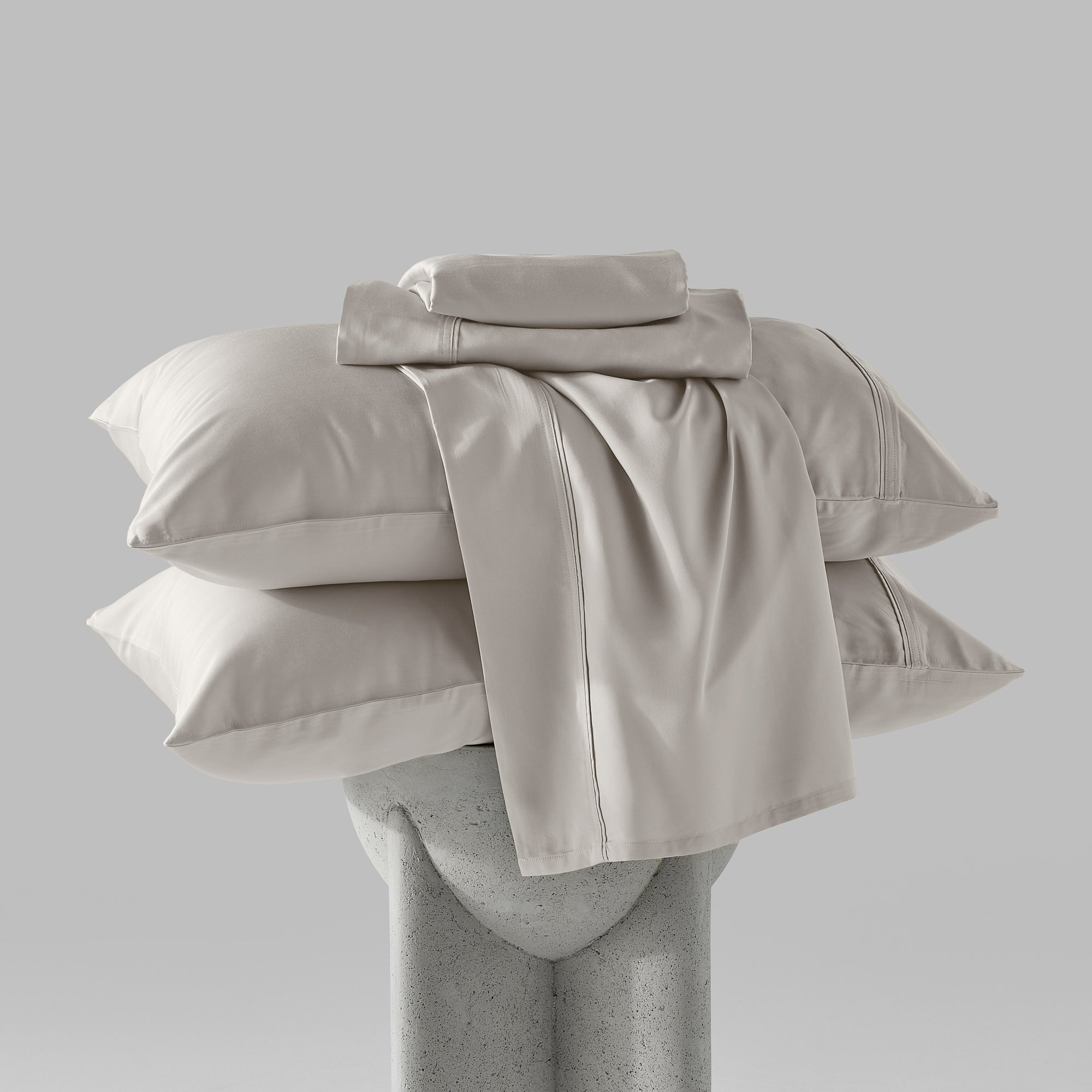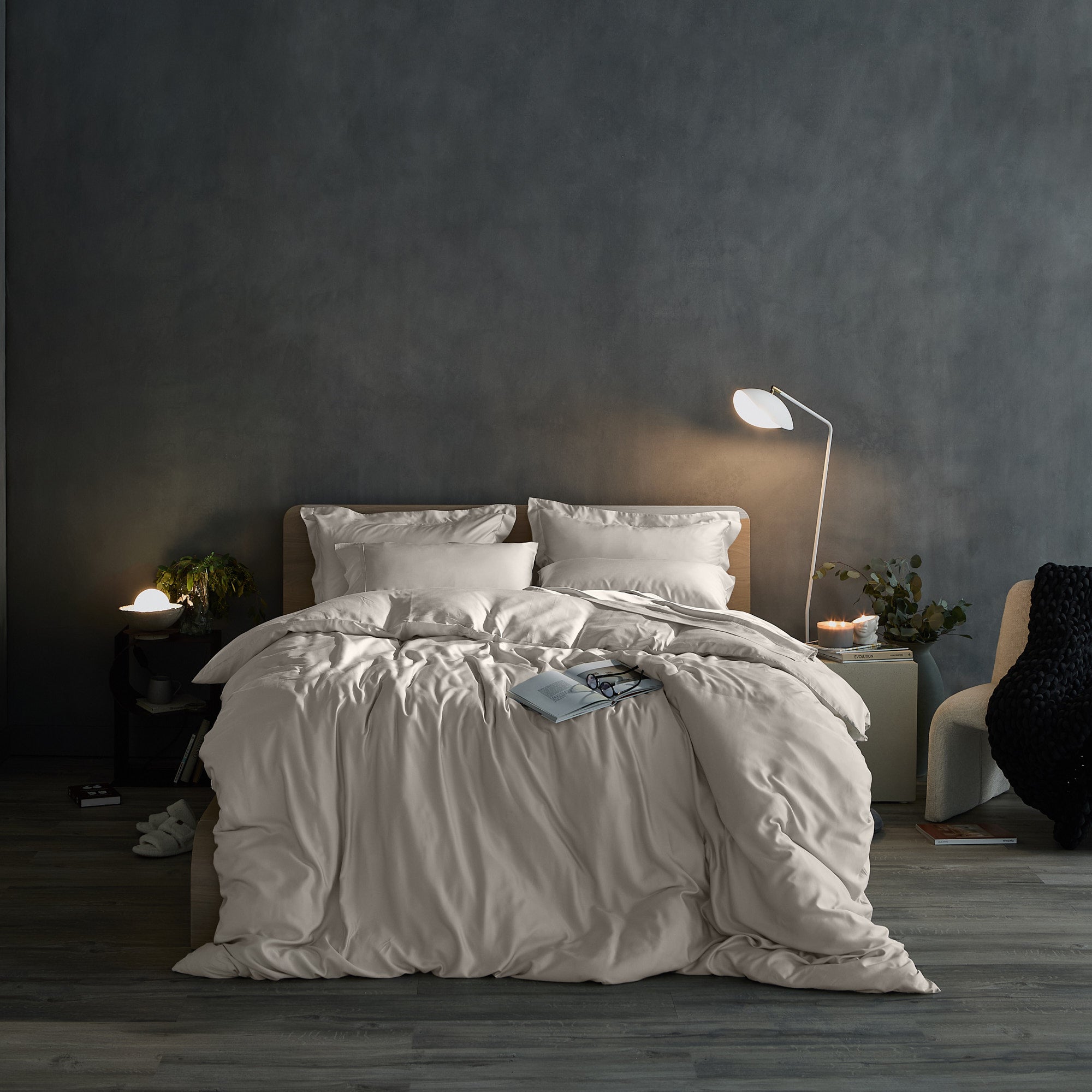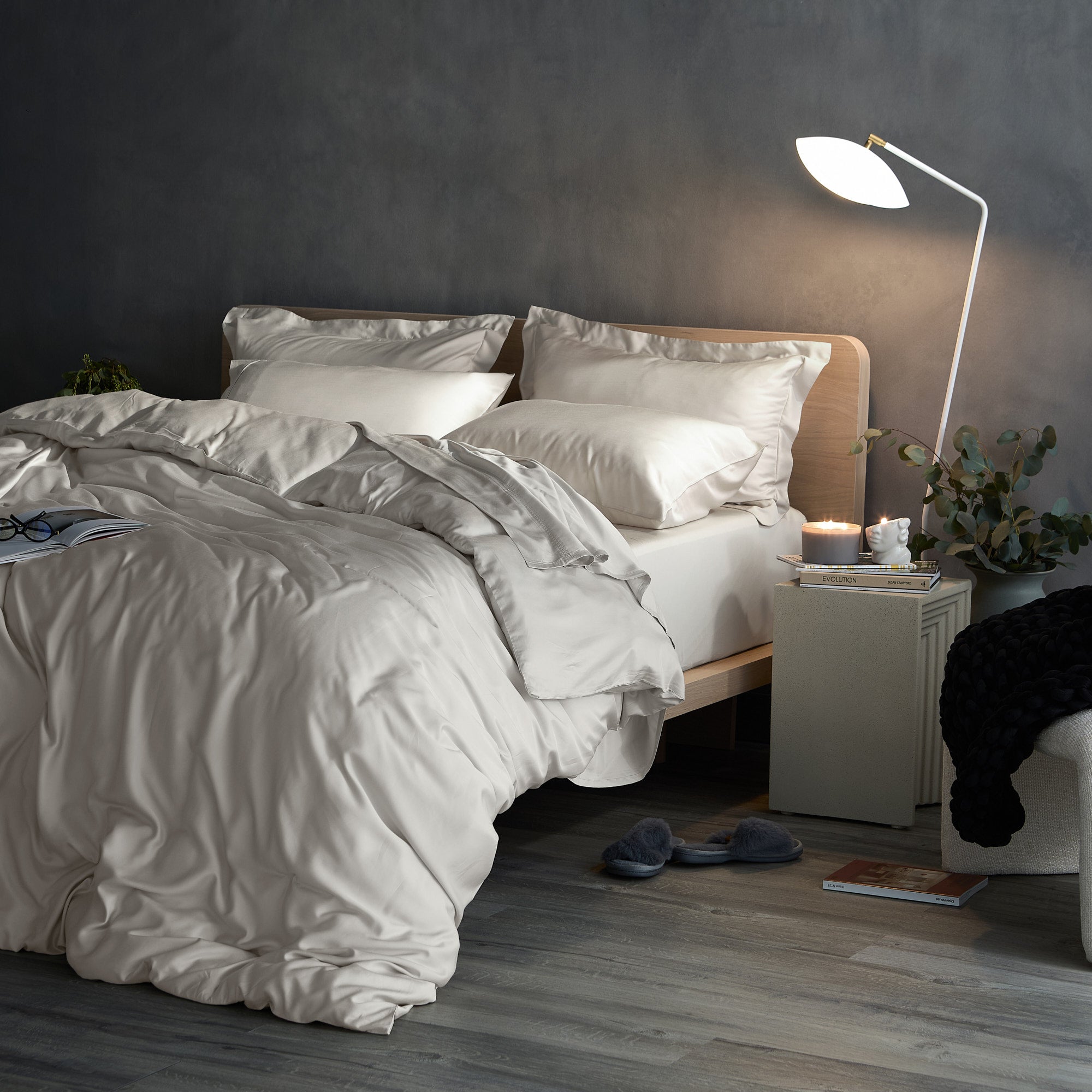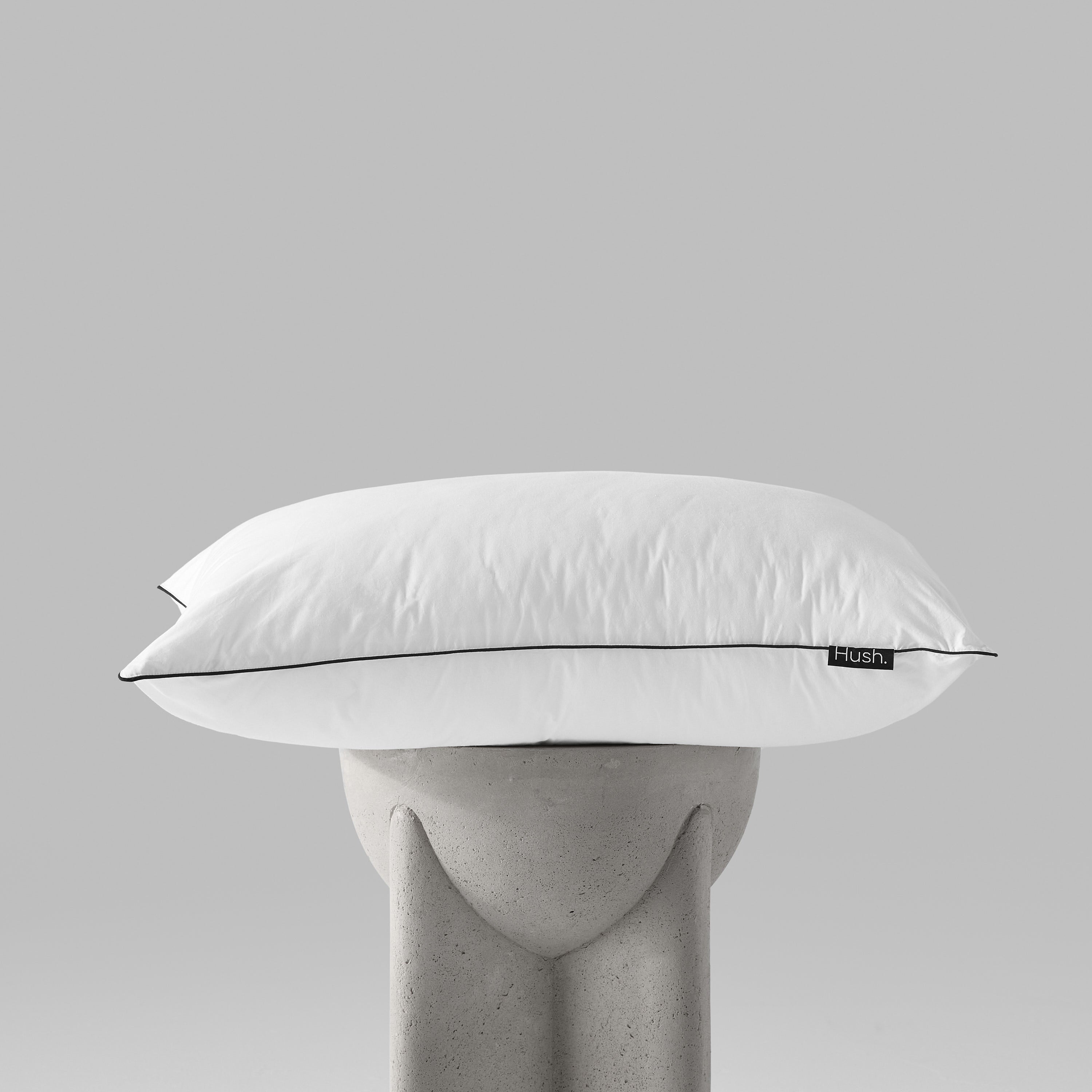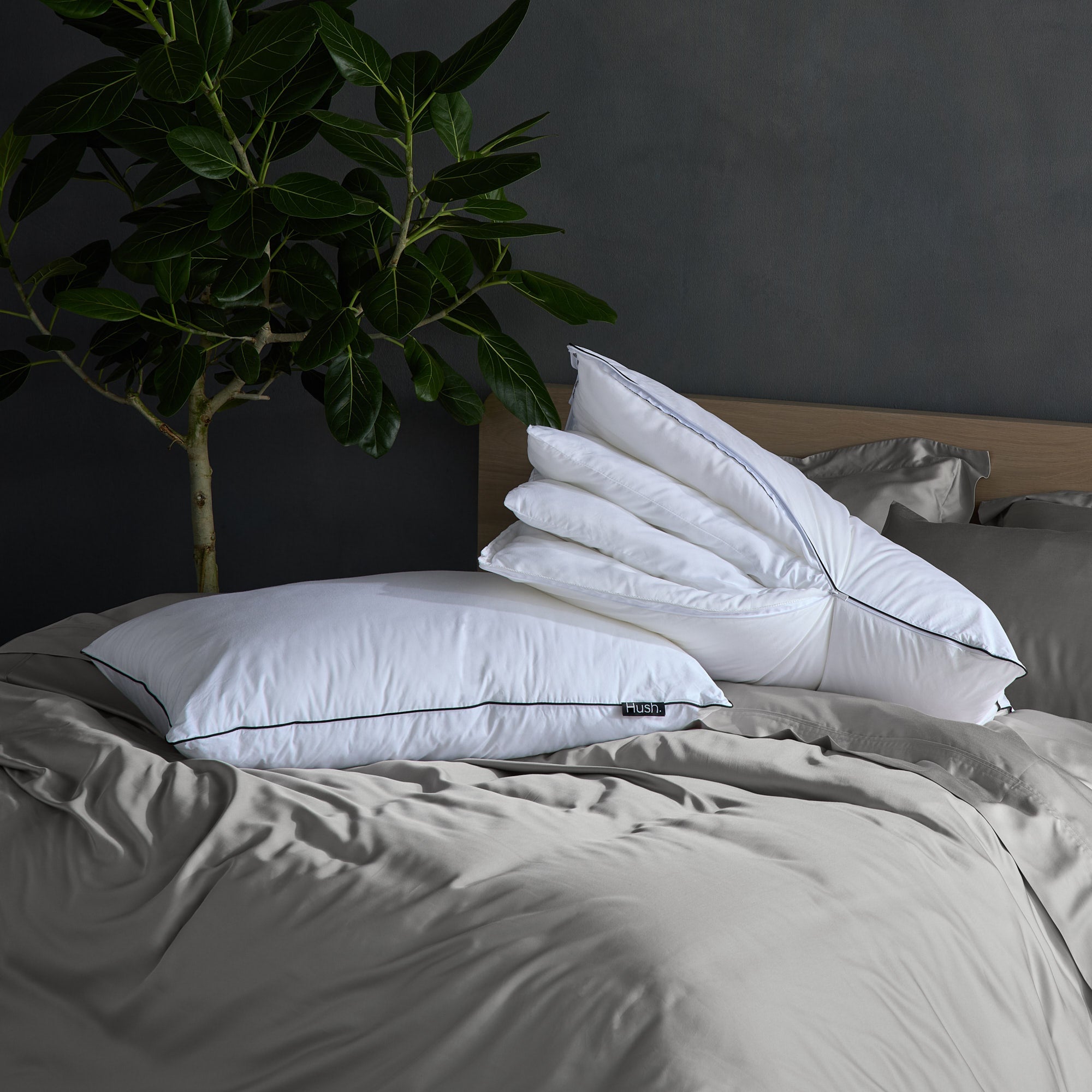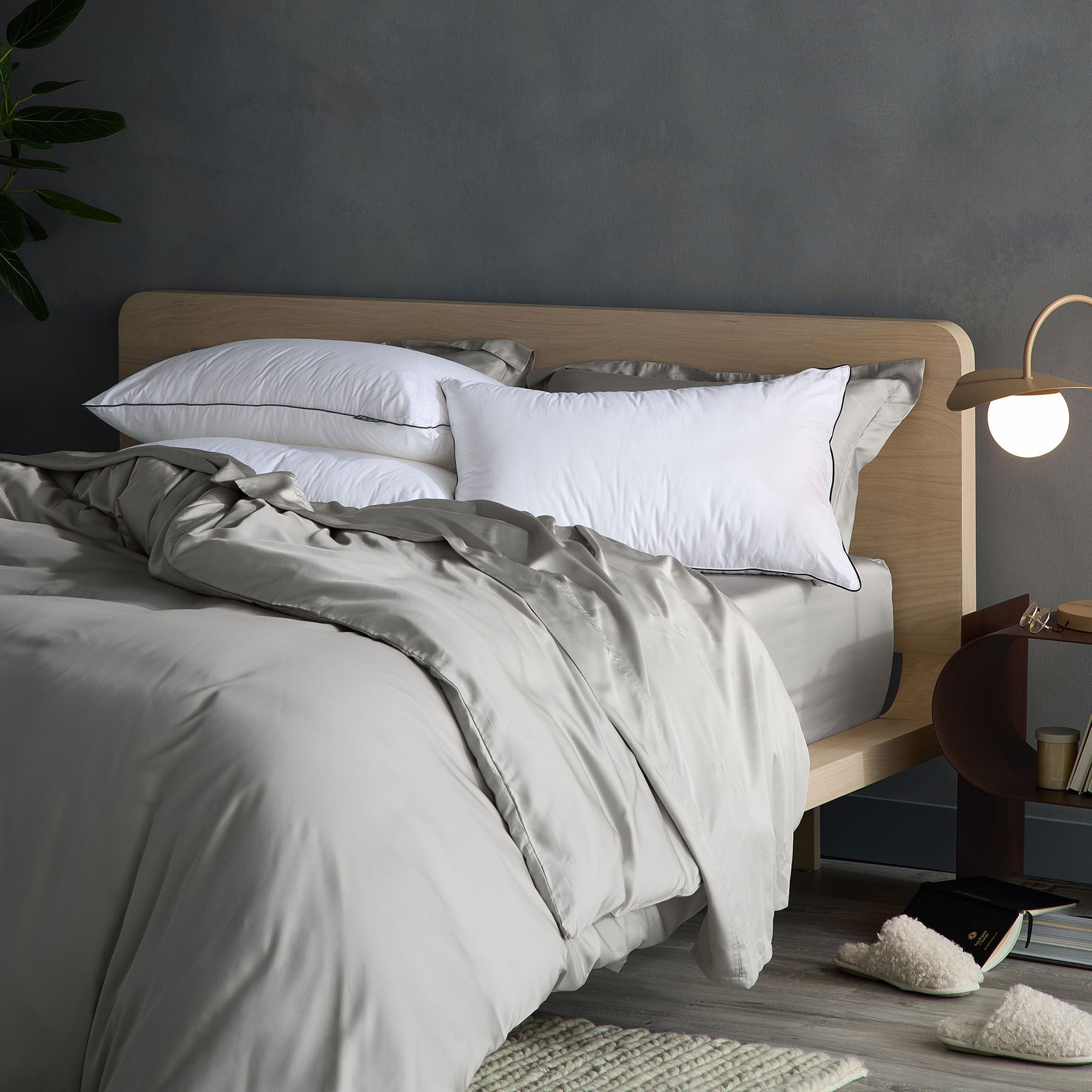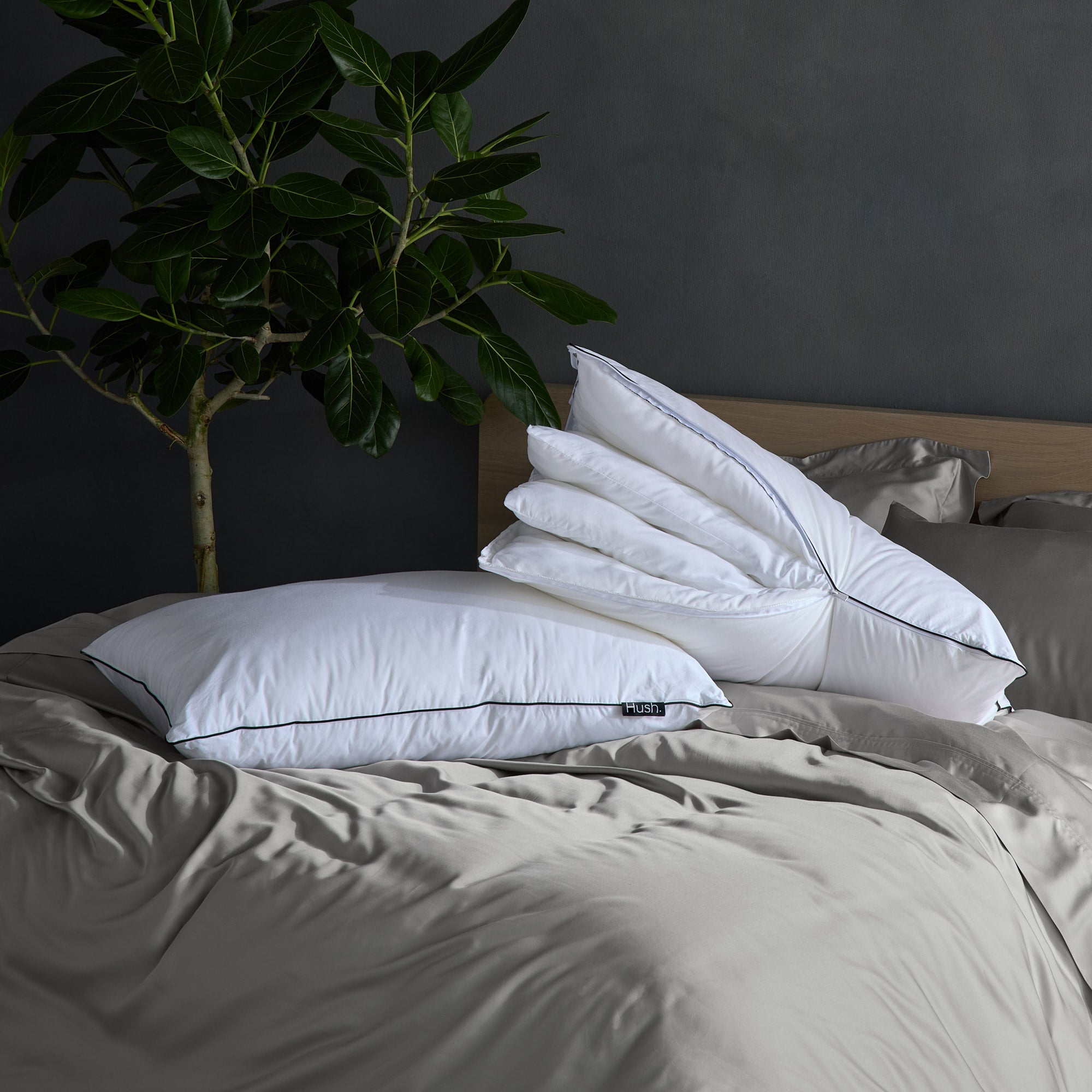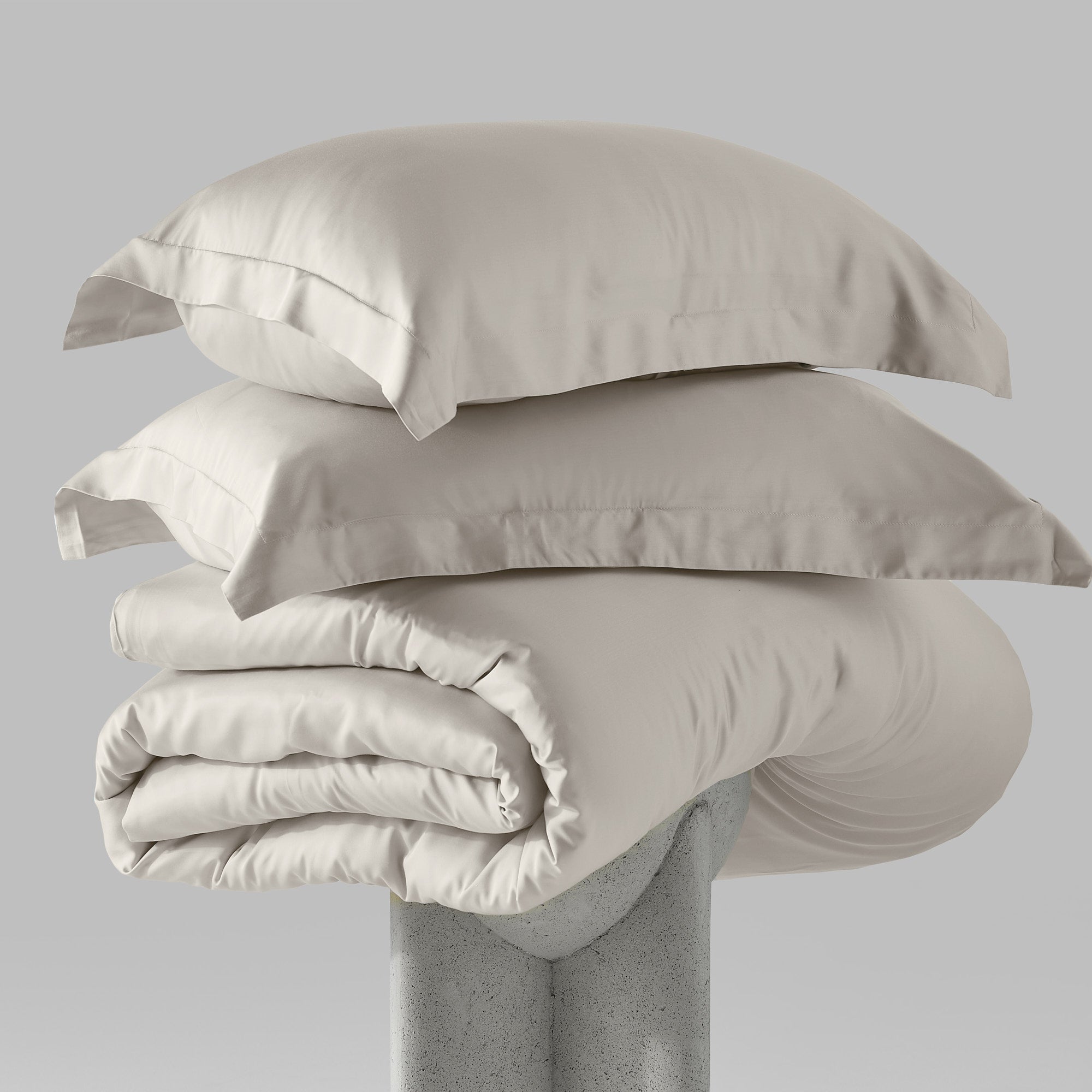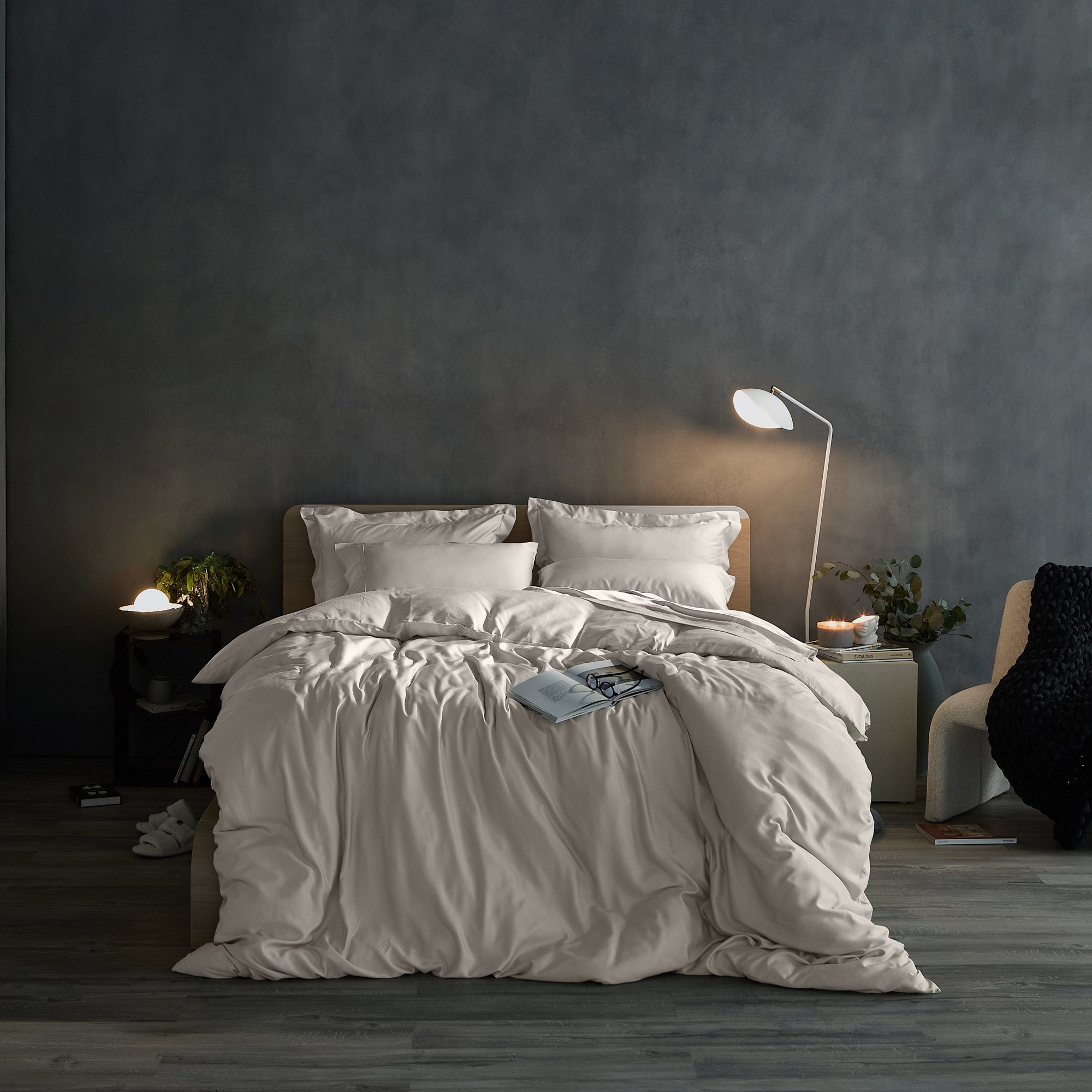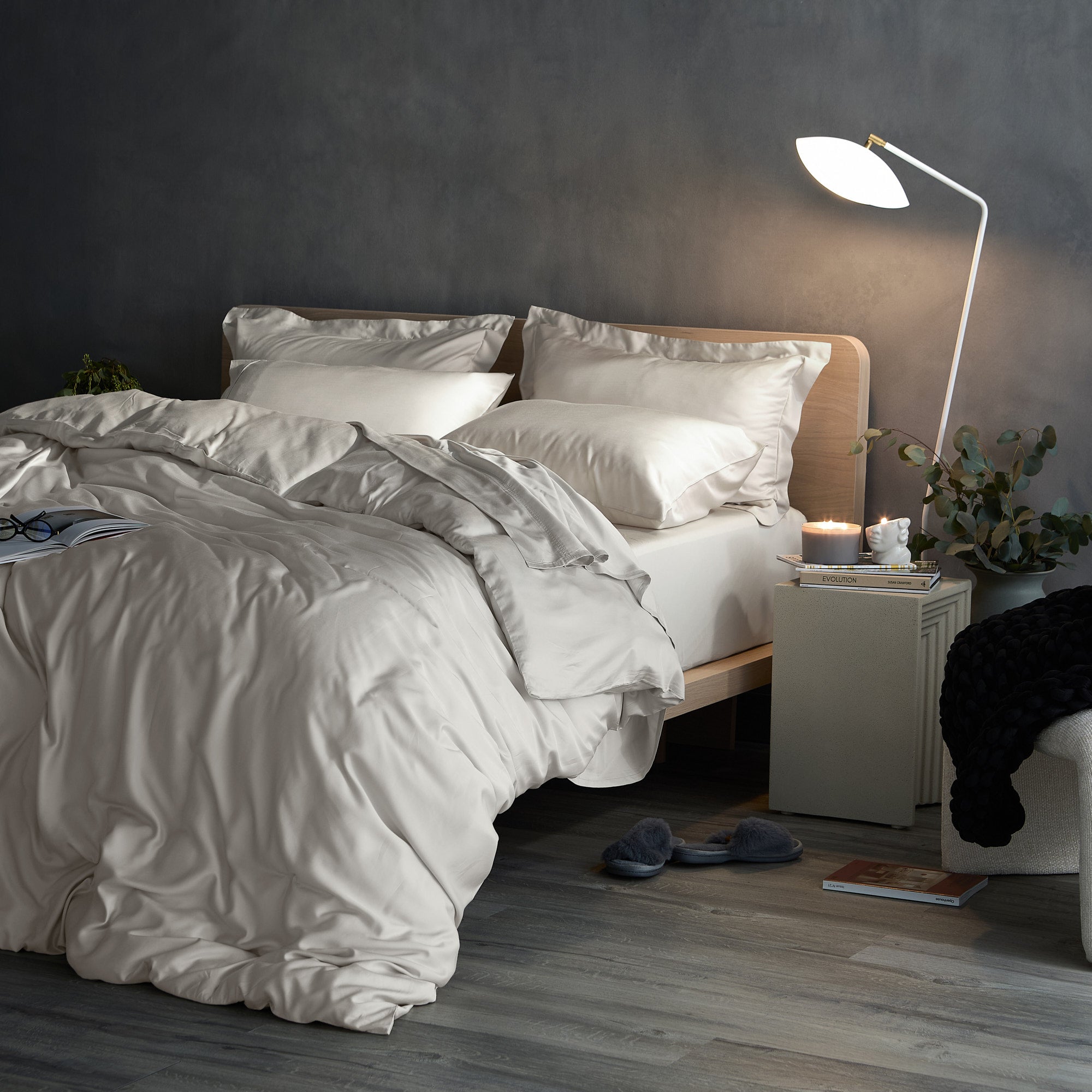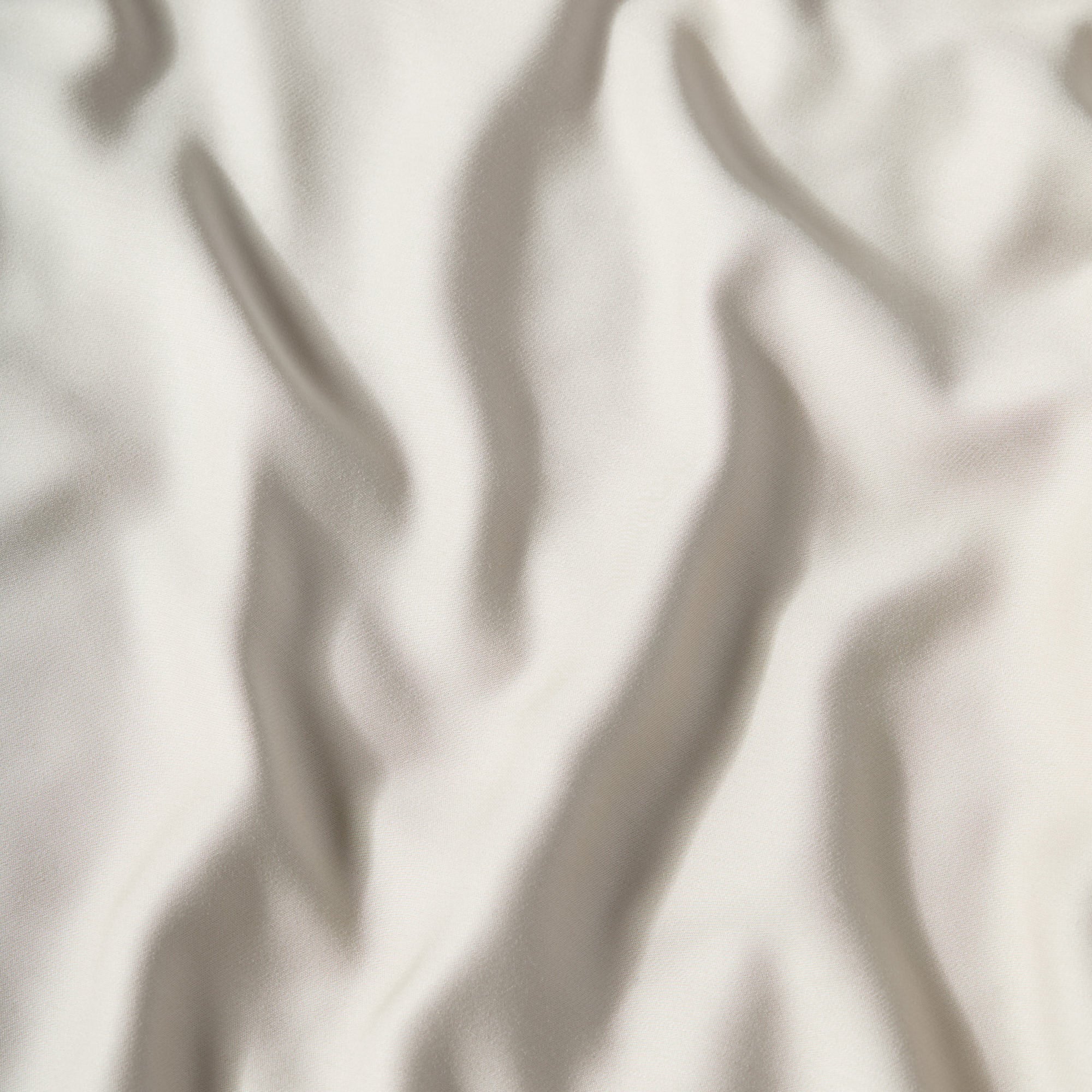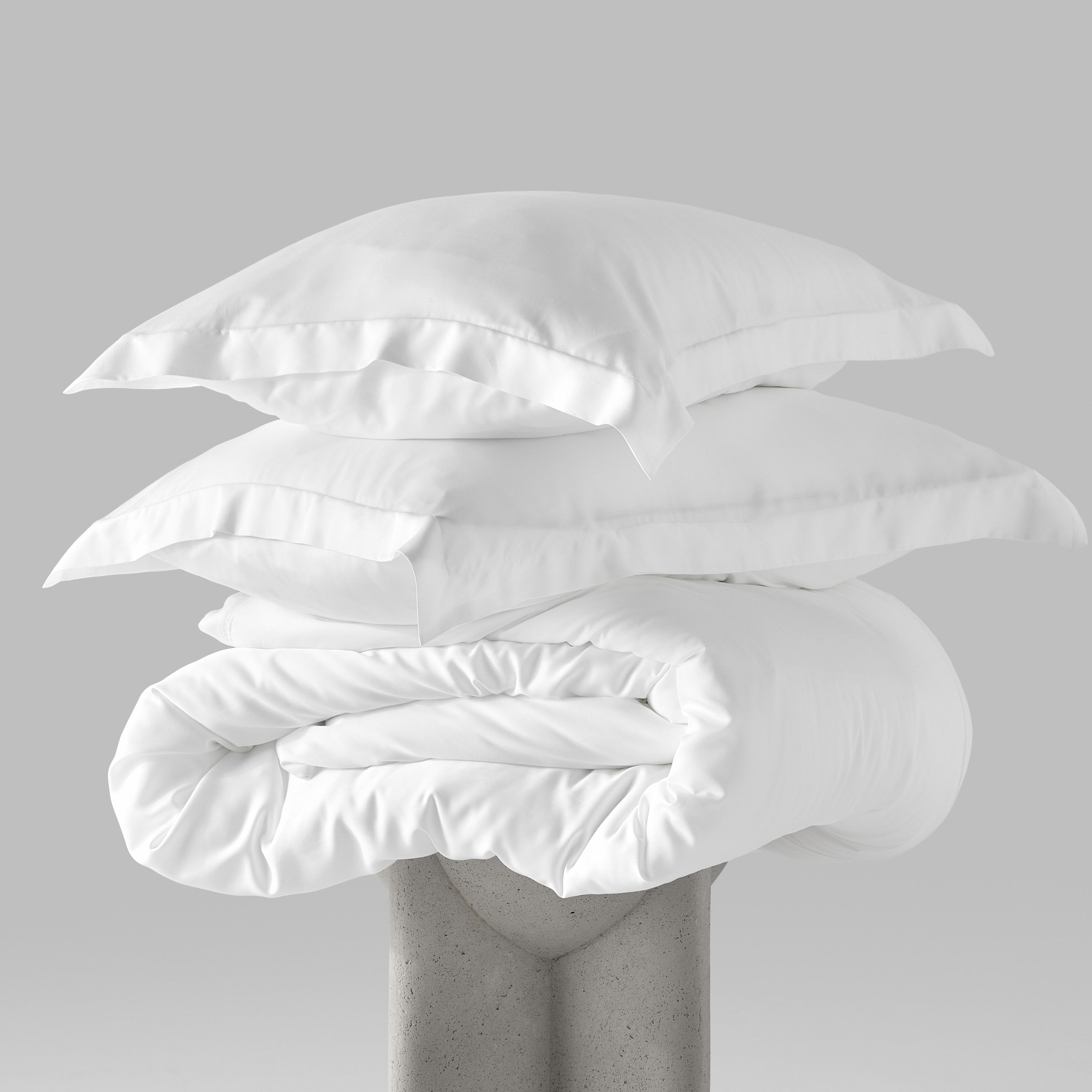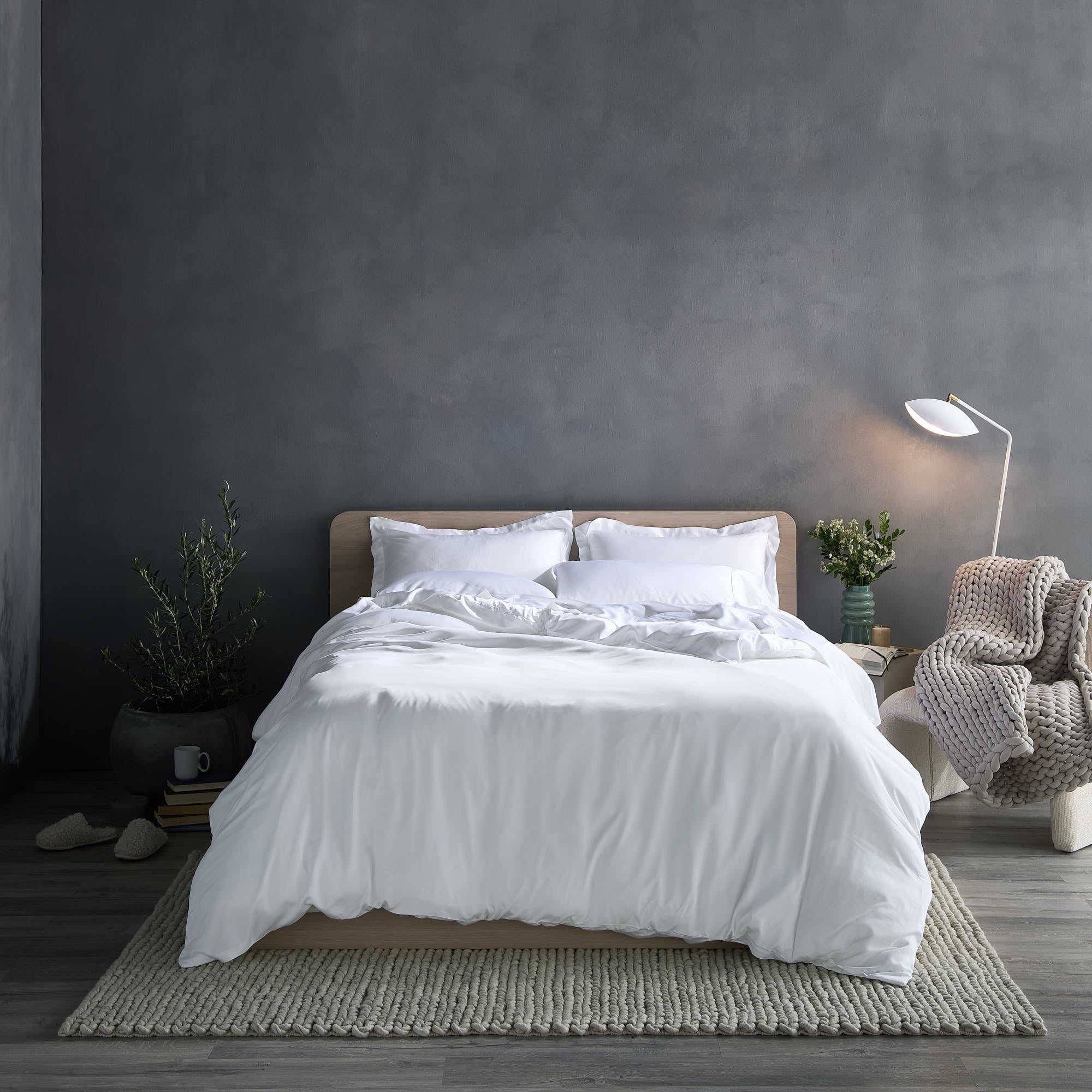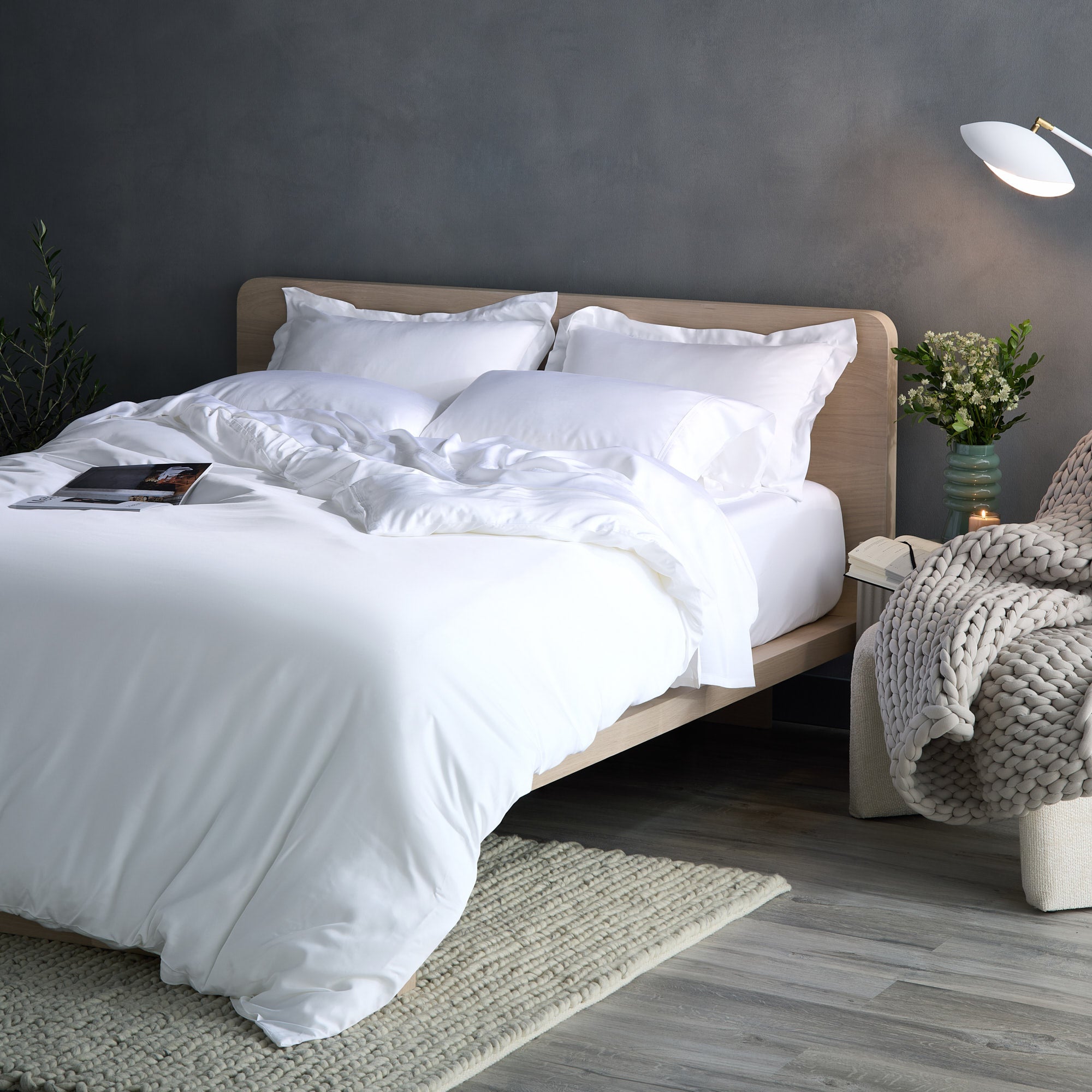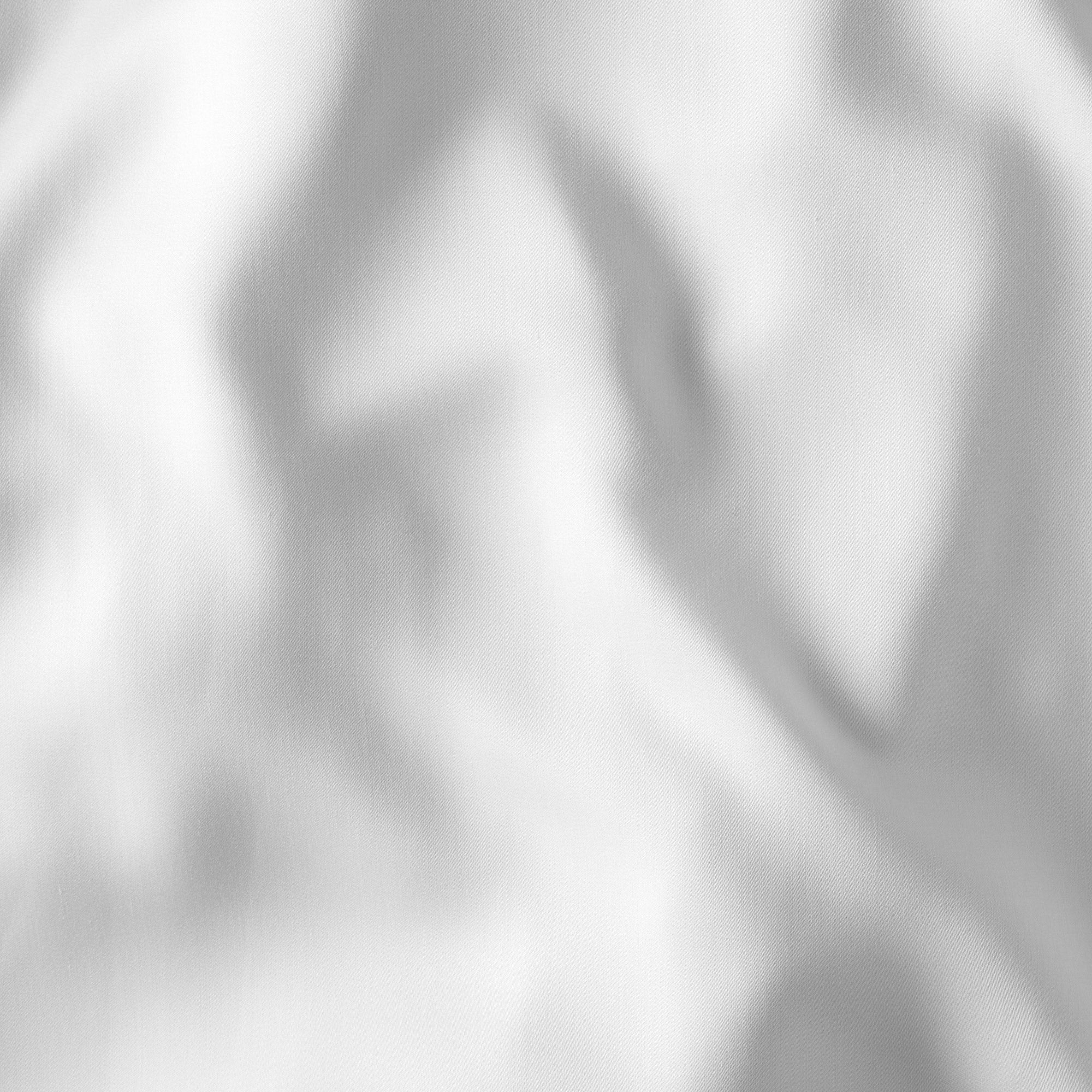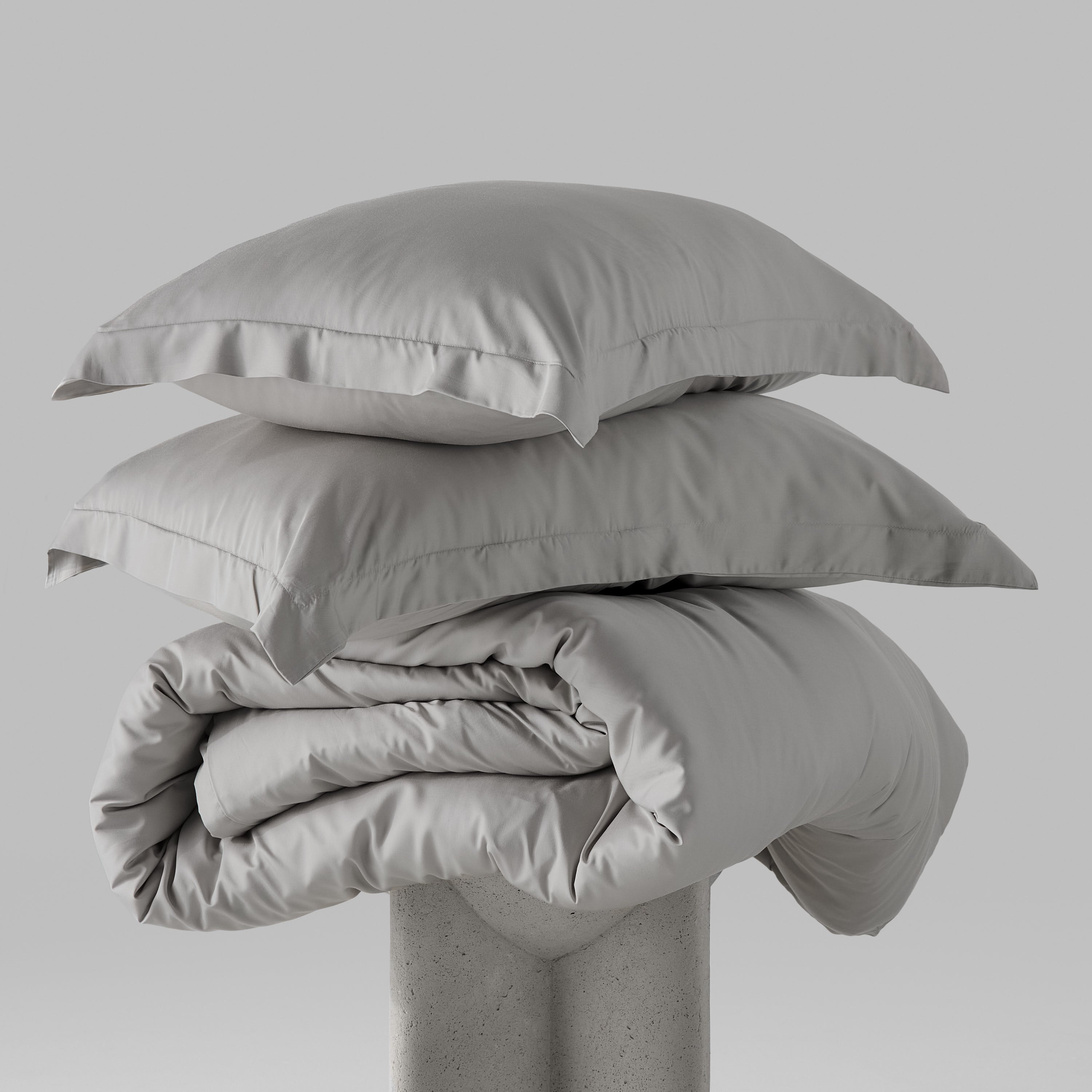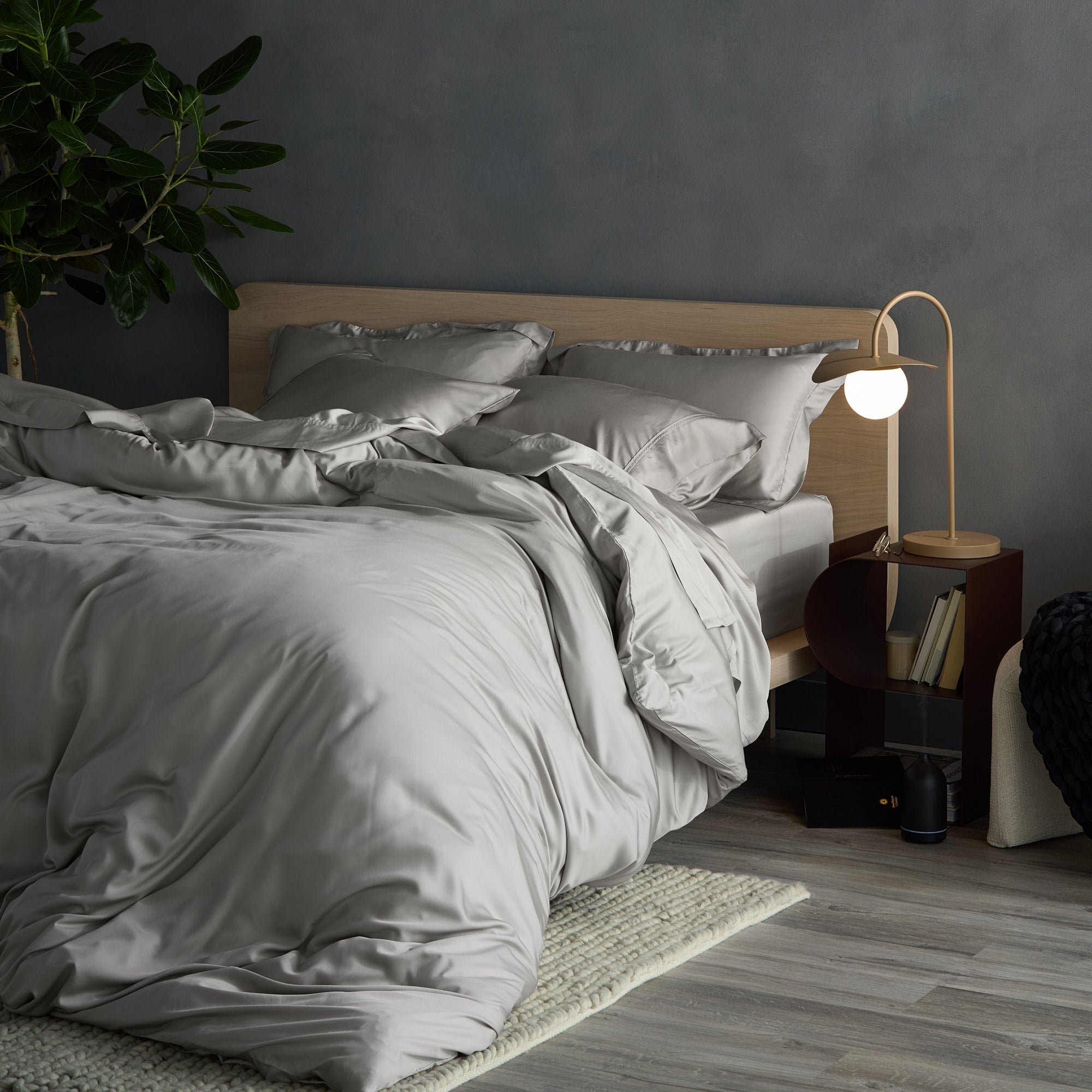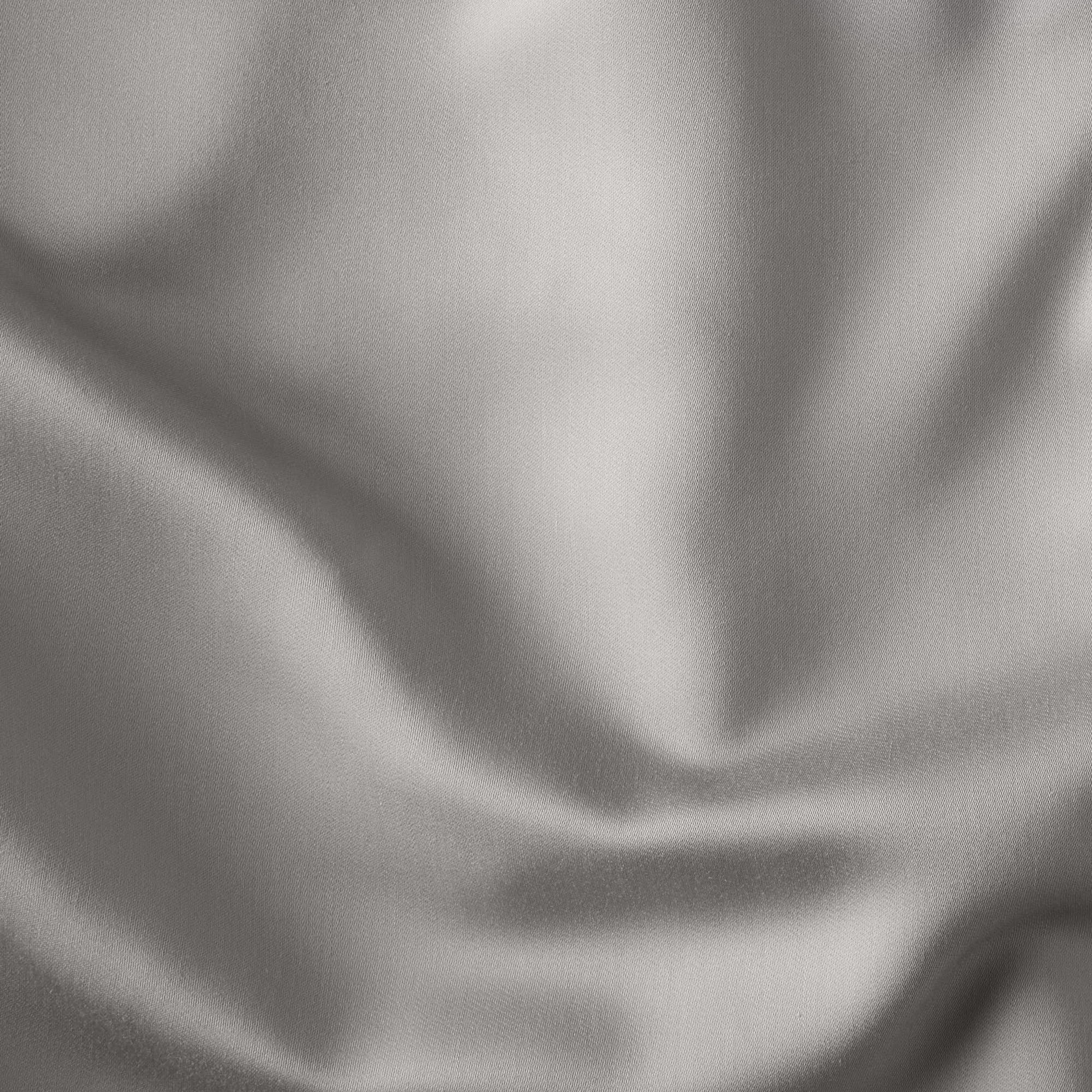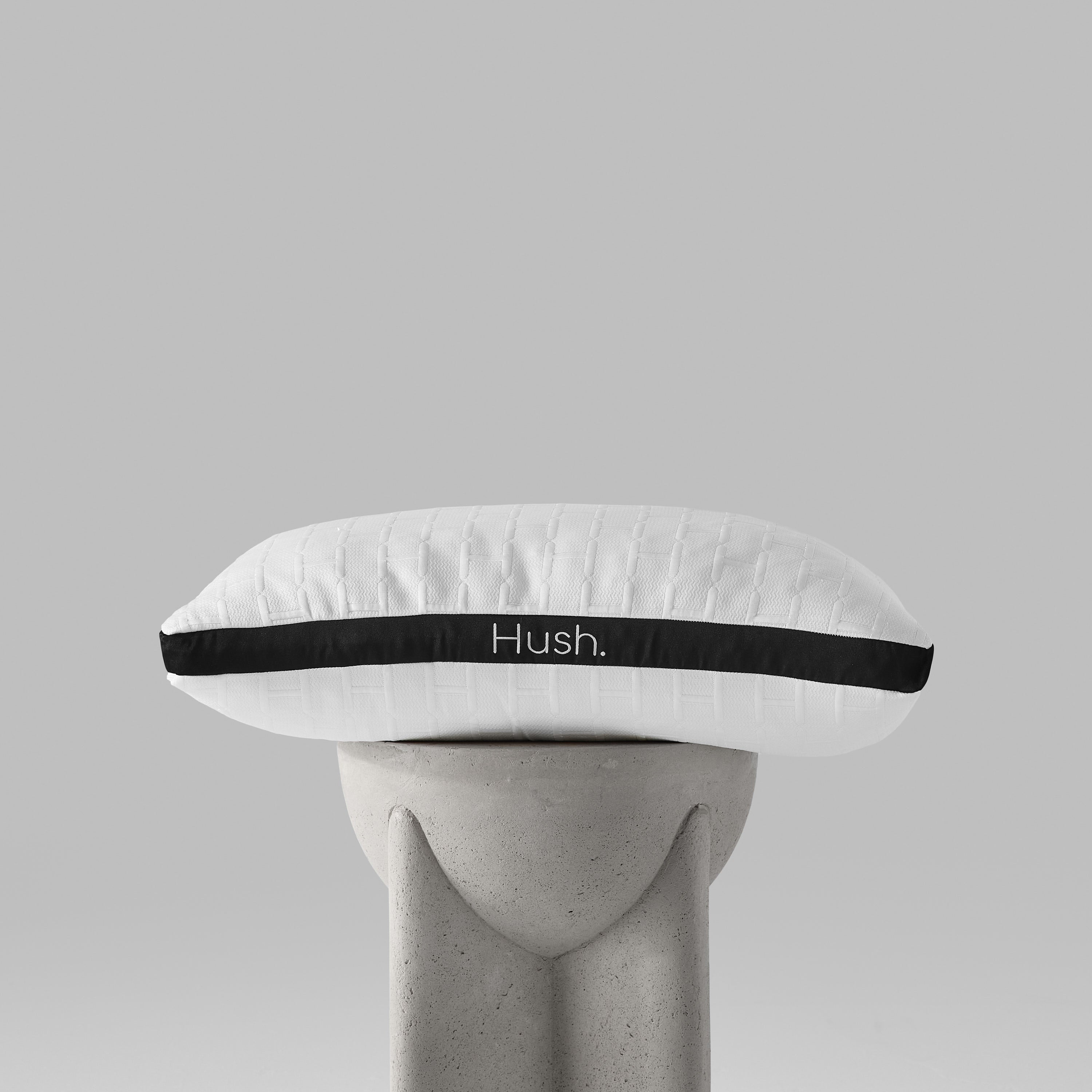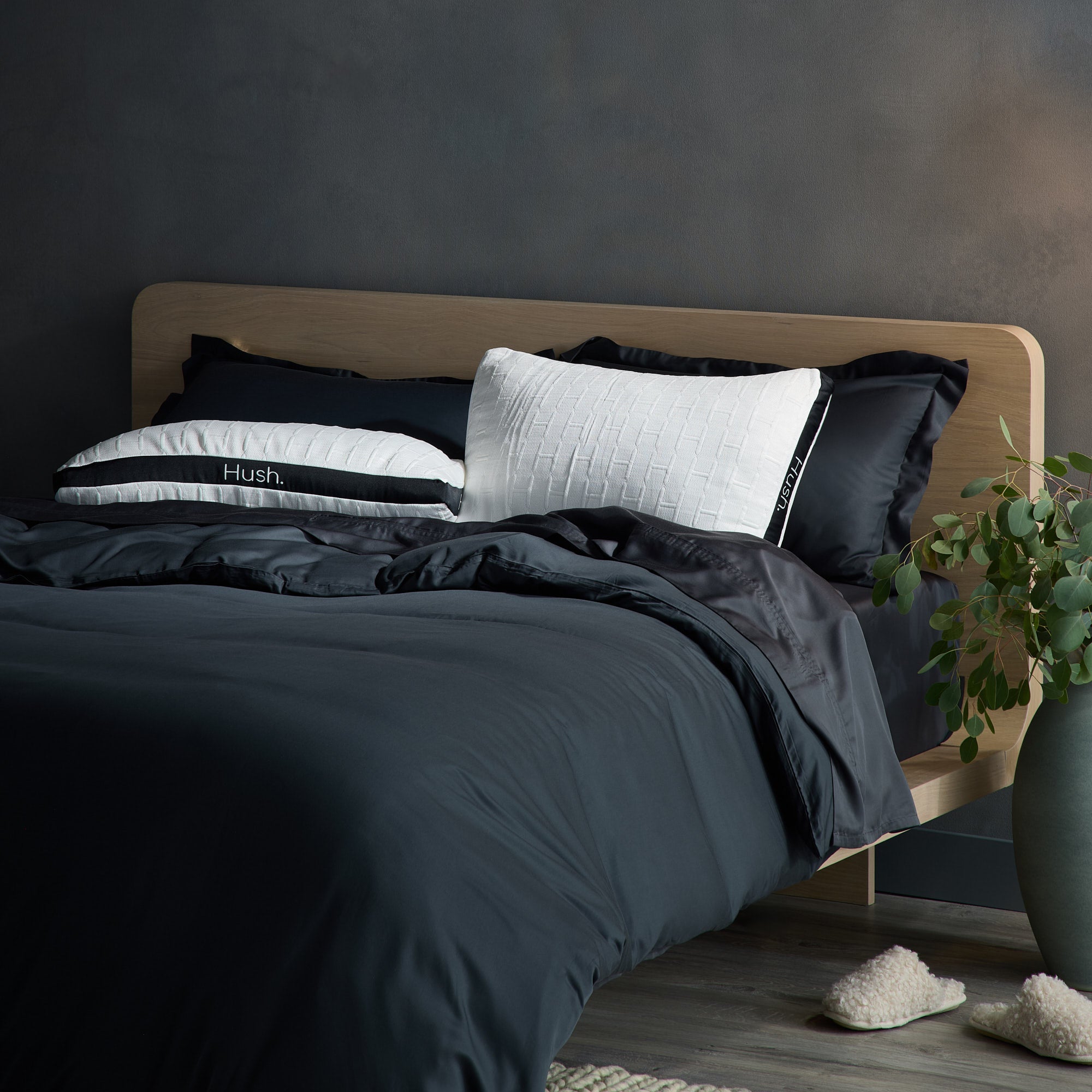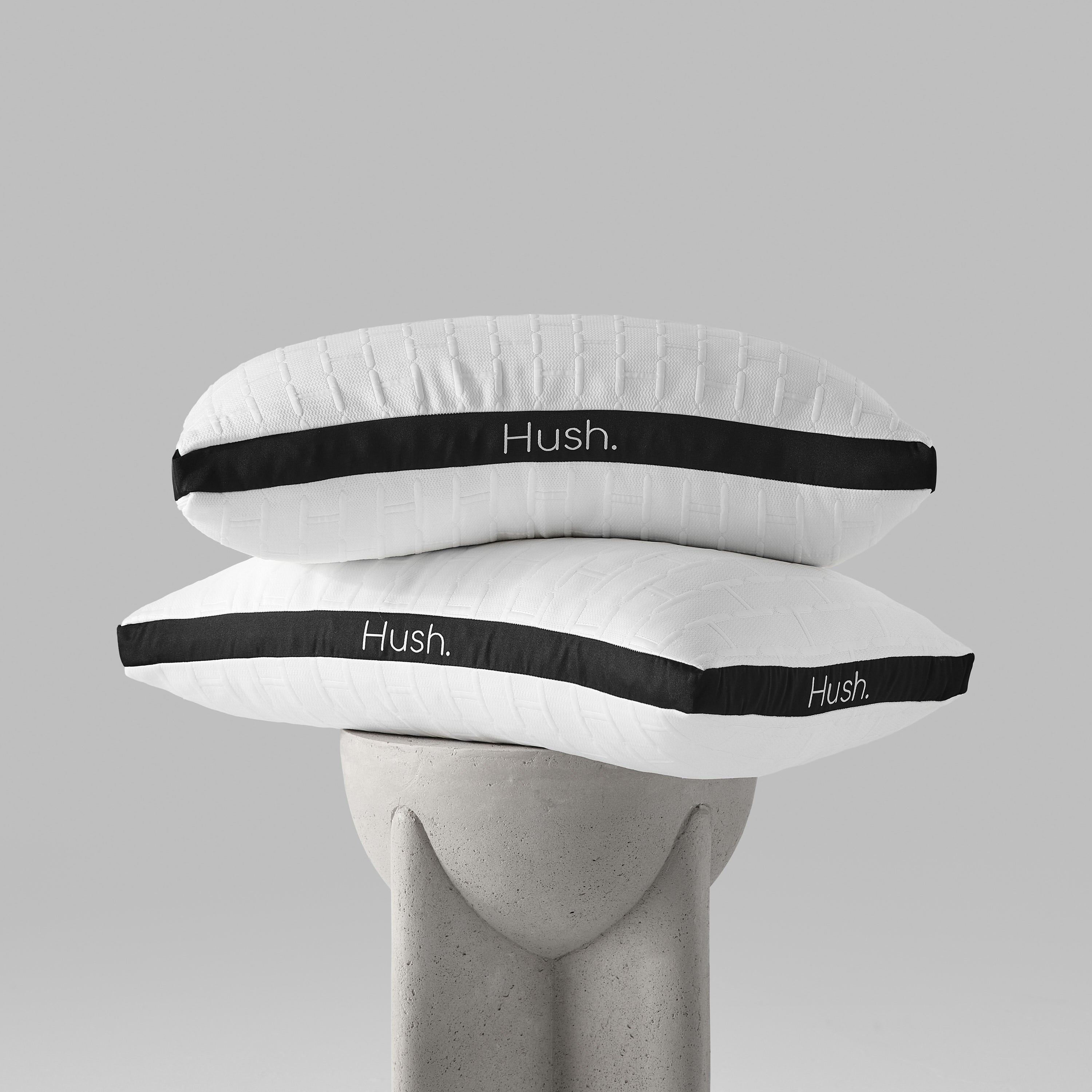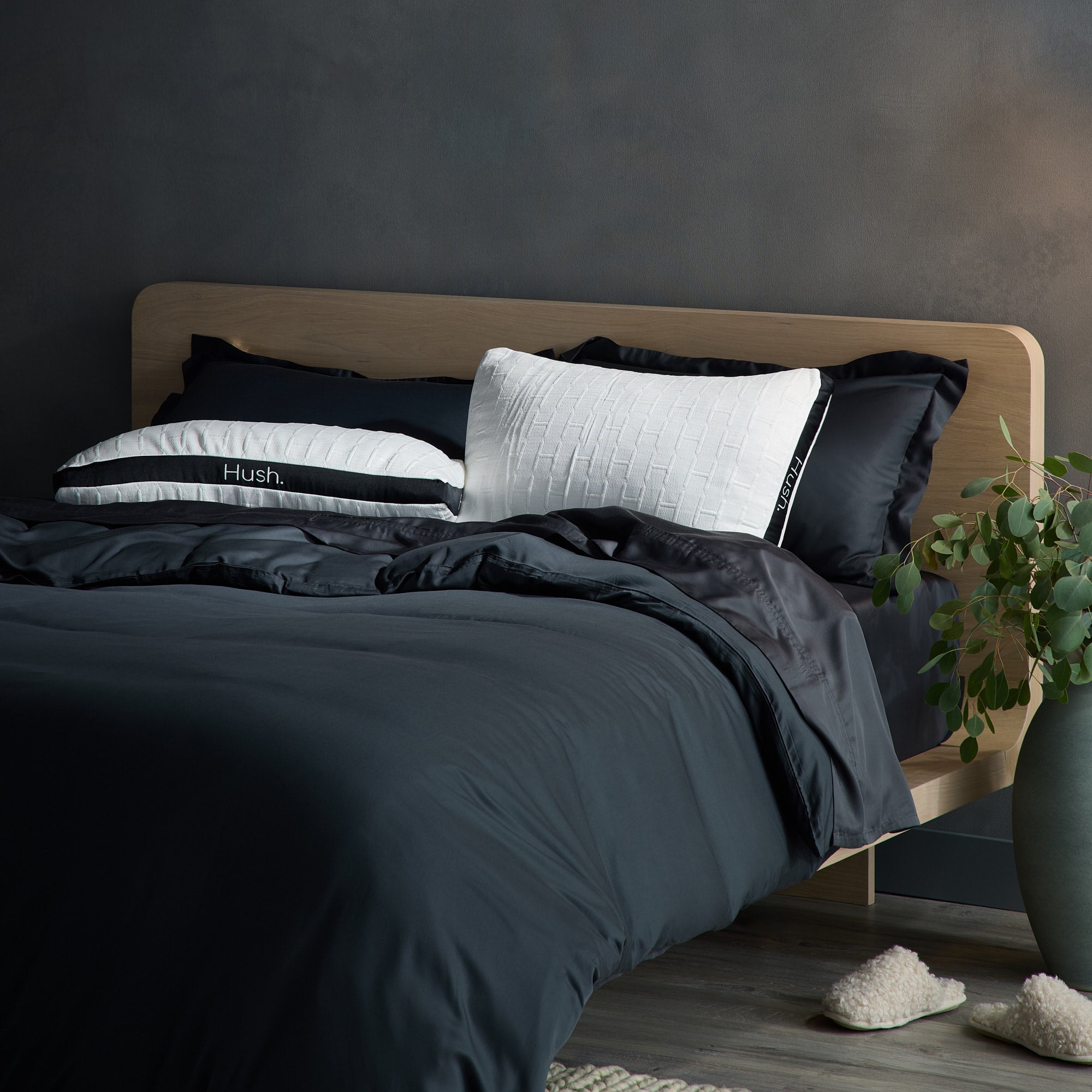At the end of a long day, there’s nothing better than coming home to a freshly made bed - at least, if you had the time to make it in the morning! And aside from the obvious comfy mattress, pillows and duvet, there are numerous other ways to transform your bed set up to ensure comfort, warmth, and ultimate coziness.
We call this bed layering, but what exactly does this involve? Put simply, think about how you might layer your own clothes when you’re getting ready for the day: there are certain non-negotiables like pants and a top or jersey, with underwear added for protection - and, in snowy Canada, often for thermal insulation too! On top of that, you can add scarves, gloves, and jackets, and each piece contributes something unique to both the style and functionality of your look. When it comes to layering your bed, the principles are almost exactly the same, but the textiles used are slightly different. Let’s take a closer look!
What Does “Layering a Bed” Mean?
As we briefly alluded to above with our clothes metaphor, bed layering is a way of adding supplementary textiles to your bed set-up in order to make it warmer, more inviting, more stylish or simply more functional. If we could sum it up, it’s a bit like bed accessorizing - but instead of gloves, scarves and hats, you’re going to want to think about throws, cushions, and - if you’re feeling fancy - perhaps a weighted or heated blanket thrown into the mix too.
How to Layer Bedding
While your own needs are going to largely influence how you style your bed, layering your bedding effectively comes down to balancing your own comfort needs with the aesthetics of your bedroom.
For example, you could mix smooth, white crisp cotton sheets with a soft queen duvet cover in a bold pattern, and add a textured, weighted blanket on top for a contrasting effect. You can also adjust your bedding layers according to the season, swapping out lighter fabrics like linen, bamboo or cotton for summer, and keeping your flannel or velvet bedding for the colder months. That said, we understand that the best material for duvet covers is going to be entirely subjective, so pick according to what suits you best (and what provides you with the best night’s sleep!).
Tips for Styling a Bed Like a Pro
So, if you’re looking to get started and create a magazine-worthy bed set-up for your bedroom, here are some of our tips and tricks:
Statement Pieces
While this isn’t a mandatory step, creating a “statement piece” on your bed can be a great way to centre your bed in your room, making it the focal point and the first thing you notice when you walk into your space. Great statement pieces could include a boldly patterned duvet cover or cushion set, or a colourful headboard in a luxurious material like quilted velvet or padded silk. You could even use minimalist colours elsewhere to create a more prominent contrast.
Either way, whether it's through a statement fabric pattern, colour schemes, or the perfect king duvet cover in a stand-out style, a focal point can bring the aesthetic of your room together.
Functionality Meets Aesthetics

When styling and layering your bed, remember that the goal of the operation isn’t just about creating something that looks pretty in photos. Given the effort you’re putting in, you’re also going to want to strike the right balance between functionality and aesthetics - after all, knowing that your bed is perfectly adapted to your comfort preferences is pretty good motivation for making your bed every morning!
To optimize your bed for comfort and coziness, think about the practicalities of each layer, and what they add to the overall ensemble: for example, consider your bed’s position in relation to the window or the heater in your home, and how extra layers might add warmth in the winter or retain heat in the summer. Adapt each layer to create something that’s not just visually pleasing, but a place that’s guaranteed to offer you a good night’s sleep all year round.
Colours and Patterns
We’ve already mentioned colours and patterns a few times above, but it’s an important point to cover nonetheless! When it comes to choosing colours for your bedding, know that colour blends play a significant role in defining the style and mood of your bedroom - and your colour choices for your bedding can even go as far as determining how easily you fall asleep.
For example, did you know that “positive” colours like blue, lavender and pink are, according to sleep experts, the most ideal colour for bed sheets if you have trouble sleeping?
On the other hand, if you want to add a rustic, cosy feel to your space, it’s a good idea to opt for earthy tones, like deep reds, oranges, and browns, and accessorise your bed with extra textiles for warmth; think cushions, fluffy throws and weighted blankets.
You also need to think about the rest of your space, which means considering how the colours and patterns will interact with the rest of your room's decor. For example, let's say that you might want to opt for a set of bright, emerald cushions and a deep pink throw to create a focal point on your bed. While this does make for a stand-out colour combo, you need the right canvas: if your walls and flooring already have lots of patterns or colour, this might just create a slightly chaotic look.
Accessorizing
Finally, bed accessories are one of the best ways to elevate the look of any styled bed - and you can add these to your set-up without having to replace your current bedding! You can accessorize your bed using details like decorative pillows and cushions, textured throws, or even a comforter laid on top of your set-up to add colour - and know that these details look especially stunning if your room already has a minimalist design.
And remember what we said about colours; if you’re not sure which shades will go best in your room, it can be helpful to go on Pinterest or Google Images and search for colour palettes that match the current colour scheme in your bedroom.








